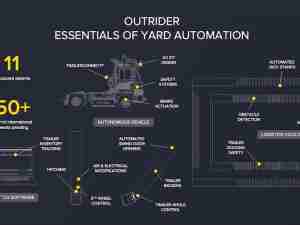Spot truckload freight postings fell 15% while the number of trucks available on the spot market increased 13% last week, a sign that capacity is loosening ahead of the Christmas holiday, said DAT Freight & Analytics, which operates the industry’s largest load board network and freight data analytics service.
With less freight and more trucks in the marketplace during the week ending Dec. 13, spot truckload pricing was generally flat compared to the previous week.
National Average Rates, December
Spot rates continue to hold up relatively well heading toward the end-of-year push:
- Van: $2.48 per mile, 4 cents higher than November
- Flatbed: $2.44 per mile, 1 cent higher than the November average
- Refrigerated: $2.66 per mile, 3 cents lower than November
These are national average spot rates for the month through Dec. 13. These averages are based on actual transactions. DAT doesn’t set spot rates—each transaction is individually negotiated between the carrier and the broker or shipper and will vary from load to load and lane to lane.
Trendlines
More van freight, lower rates
The number of loads moved on DAT’s top 100 van lanes by volume jumped 24.2% compared to the previous week but the average spot truckload rate fell on 62 of those lanes. The rate was neutral on 19 lanes and increased on 19 lanes.
Each of the top 10 van markets registered double-digit increases in volume compared to the previous week but recorded lower average outbound rates. Among them:
- Chicago: $2.99 a mile, down 11 cents on a 23.4% increase in volume
- Los Angeles: $3.34 a mile, down 11 cents on a 24% increase in volume
- Stockton, Calif.: $2.77 a mile, down 16 cents on an 18% increase in volume
- Atlanta: $2.50 a mile, down 16 cents on a 20% increase in volume
- Houston: $2.09 a mile, down 1 cent on a 27% increase in volume
The busiest lanes for van load volume last week involved Los Angeles and Stockton. L.A. to Stockton averaged $3.76 a mile, up a penny, while Stockton to L.A. averaged $2.16 a mile, down 8 cents.
Reefer volumes are cooling
Nationally, the average reefer load-to-truck ratio dropped from 9.0 to 5.5 last week, with food shipments in a lull between holidays. The number of loads moved on DAT’s top 72 reefer lanes by volume has fallen nearly 21% over the last four weeks.
The average rate was higher on just 13 of those lanes compared to the previous week but some of those increases were big ones:
- Tucson, Ariz., to Los Angeles: $2.40 a mile, up 20 cents
- Grand Rapids, Mich., to Cleveland: $4.19 a mile, up 25 cents
- Elizabeth, N.J., to Boston: $5.62 a mile, up 22 cents
Houston flatbeds show signs of life
The national average flatbed load-to-truck ratio dipped from 35.8 to 35.5 last week, still well ahead of the monthly average of 13.2 in December 2019. Pricing on DAT’s top 78 flatbed lanes was steady, with the average outbound rate up on 24 lanes, lower on 27 lanes, and neutral on 27 lanes. Volume on these lanes increased 1.5% week over week.
Houston is a vital market for flatbed freight and three of the top five lanes by volume last week originated there:
- Houston to Fort Worth: $2.41 a mile, up 1 cent compared to the previous week
- Houston to New Orleans: $2.78 a mile, down 6 cents
- Houston to El Paso: $2.20 a mile, up 2 cents
The Federal Reserve Bank of Dallas said last week that Houston-area mining and manufacturing businesses have a net loss of 14,000 jobs since April. While layoffs, consolidation, and bankruptcies in energy-related manufacturing continue to mount, the biggest job losses are likely in the past, the Dallas Fed reported.
National average rates are derived from DAT RateView, a database of $68 billion in actual spot market transactions each year. DAT monitors an additional $50 billion in contract freight transactions for subscribers to its Freight Market Intelligence Consortium (FMIC).








